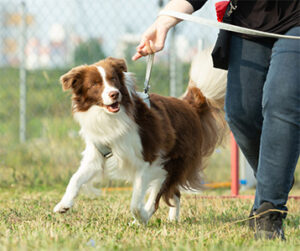For dog owners, achieving a well-behaved and happy furry companion is a shared aspiration. While there are various dog training methods available, balanced dog training stands out as an approach that combines the best of both worlds. In this article, we will delve into the world of balanced dog training, exploring its key principles, and uncovering the multitude of benefits it offers. Whether you’re a seasoned dog owner or a newcomer in the world of pet parenting, understanding the advantages of balanced training can be a game-changer in fostering a strong and positive bond with your canine friend.
The Philosophy of Balanced Dog Training
Balanced dog training is an approach rooted in the philosophy of achieving a harmonious balance between positive reinforcement techniques and the judicious use of mild corrective measures when necessary. This method acknowledges that every dog is unique, with distinct behavioral issues and individual needs. Therefore, it places equal importance on rewarding desirable behaviors and discouraging unwanted ones, all while maintaining a positive and trusting relationship between the dog and its owner.
Let’s explore the key elements of balanced dog training and understand how they contribute to its effectiveness:
- Positive Reinforcement: Encouraging the Good
Positive reinforcement is the cornerstone of balanced training. It involves rewarding your dog with treats, praise, or other positive stimuli when they exhibit desired behaviors. This method serves as a powerful motivator, as dogs naturally seek rewards and recognition from their owners. Through positive reinforcement, dogs learn to associate good behavior with positive outcomes, making them more likely to repeat those behaviors.
- Corrections: Redirecting Unwanted Behavior
In balanced dog training, corrections are introduced when a dog engages in undesirable behavior. It’s important to emphasize that these corrections are typically mild and gentle, aimed at redirecting the dog’s behavior towards a more desirable action. Corrections are not meant to harm or traumatize the dog but to provide clear guidance about which behaviors are unacceptable.
- Individualized Approach: Tailoring Training to Your Dog
One of the strengths of balanced training is its adaptability. Experienced trainers take the time to assess each dog’s unique personality, temperament, and specific behavioral issues. This assessment forms the foundation for tailoring the training approach to the individual needs of the dog. By recognizing that no two dogs are alike, balanced trainers can design a personalized training plan that maximizes success.
- Clear Communication: The Language of Expectations
Effective communication is at the heart of balanced dog training. Trainers use cues, commands, and body language to convey their expectations to the dog. This clear and consistent communication ensures that the dog understands what is being asked of them. Dogs are intelligent and responsive creatures, and they thrive when they can interpret and respond to their owner’s signals.
- Gradual Progression: Building Skills Incrementally
Balanced training recognizes that dogs, like humans, learn best through gradual progression. Training often involves incremental steps, starting with basic commands and behaviors and gradually increasing the difficulty as the dog becomes more skilled. This approach ensures that dogs feel a sense of accomplishment and confidence as they progress in their training.
 Focus on Bonding: Strengthening the Human-Canine Connection
Focus on Bonding: Strengthening the Human-Canine Connection
Beyond teaching obedience, balanced training places a strong emphasis on building a deep bond and trust between the owner and the dog. This positive relationship is seen as essential for successful training outcomes. A dog that trusts and respects their owner is more likely to respond positively to training and to become a well-adjusted and happy companion.
- Benefits of Balanced Dog Training
Now that we’ve explored the principles of balanced dog training, it’s time to uncover the multitude of benefits this approach offers to both dogs and their owners. Here are some of the key advantages:
- Effective Behavior Modification:
Balanced training is highly effective in addressing a wide range of behavioral issues, from basic obedience to more complex problems like aggression or anxiety. By combining positive reinforcement with mild corrections, trainers can tackle various challenges effectively.
- Tailored Solutions:
With its individualized approach, balanced training offers tailored solutions to specific dog behavior problems. This means that each dog receives training that fits their unique needs, increasing the likelihood of success.
- Enhanced Communication:
Clear and consistent communication is a hallmark of balanced training. This not only facilitates effective training but also strengthens the overall communication between owner and dog, leading to a deeper understanding of each other.
- Stronger Bond:
The focus on bonding and trust-building fosters a stronger and more positive relationship between the dog and its owner. Dogs trained using balanced methods often display higher levels of obedience, respect, and affection towards their owners.
- Confident Dogs:
Gradual progression in training helps build a dog’s confidence. Dogs that feel secure and capable are less likely to exhibit fearful or aggressive behavior and are generally more well-adjusted.
- Versatile Training:
Balanced training is versatile, suitable for a wide range of dog breeds, ages, and temperaments. Whether you have a spirited puppy or a mature dog with behavioral challenges, this approach can be tailored to suit your dog’s specific needs.
- Long-Term Results:
By promoting a positive and respectful relationship between dog and owner, balanced training tends to yield long-term results. The skills and behaviors learned through balanced training are more likely to endure over time.
- Improved Socialization:
Dogs trained using balanced methods often exhibit better socialization skills, making them more comfortable around other dogs and people. This can lead to more enjoyable walks, visits to the dog park, and interactions with friends and family.
- Stress Reduction:
Training that combines positive reinforcement with gentle corrections can help reduce stress and anxiety in dogs. A well-trained dog is often a happier and more relaxed companion.
- Empowered Owners:

Balanced dog training offers a comprehensive and effective approach to canine behavior modification and obedience training. By striking a balance between positive reinforcement and gentle corrections, this method provides tailored solutions to address a wide range of behavioral issues while fostering a strong and positive bond between dogs and their owners. For those seeking a well-behaved and harmonious relationship with their canine companions, balanced training stands as a versatile and beneficial approach that can lead to a lifetime of shared joy and mutual respect.
Summary:
Explore the world of balanced dog training in our comprehensive article. Discover how this approach, blending positive reinforcement with gentle corrections, can effectively address behavioral issues, strengthen the bond between you and your dog, and empower you as a pet owner. Uncover the benefits of balanced training and embark on a path to a harmonious and fulfilling relationship with your canine companion.

